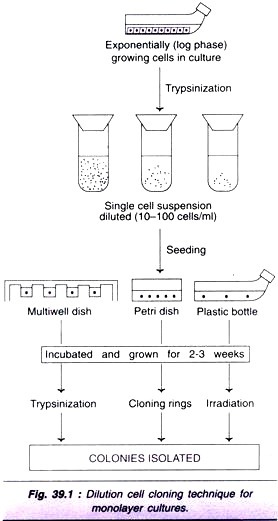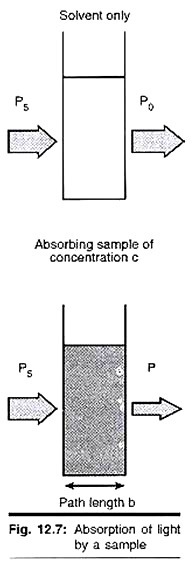This article provides useful notes about Ultrastructure, Variation, Chemical composition, Movement and Origin of Cilia and Flagella!
The surface of certain cells is drawn out to form fine hair-like processes called cilia or flagella according to their length.
Cilia (L., cili, eye lash) and flagella (L., little whip) are situated external to cytoplasm but have their origin from cytoplasm.
Many protozoans, flatworms and plant cells bear these structures. In protozoans, cilia and flagella are the main organelles of locomotion.
Flagella are nearly always associated with locomotion, but cilia, which are of much wider occurrence, perform other functions as well. For example, they are found lining ducts and tubules and other specialized surfaces along which materials are wafted by means of their rapid and rhythmical beatings. Cilia and flagella also create food currents and act as sensory organs.
Cilia and flagella are fundamentally similar but cilia are generally greater in number than the flagella. In Paramecium, a single cell possesses about 17,000 cilia; each one is about 10 µ long. These cilia may be 5 to 10µ in length.
Flagella are one or two in a cell occurring at one end of the cell and upto 150µ in length, while cilia may occur all over the surface of body. In some special regions of Infusoria (Protozoa), several cilia fuse and form large conical appendices, the cirri or membranes known as undulating membrane. Cilia tend to beat or move in a coordinate rhythm, while flagella beat independently. Cilia are of two types —
1. Stereocilia:
These which are immobile cytoplasmic extensions, e.g., cilia of epididymis, and macula and crista of internal ear. Stereocilia do not contain microtubules. They possess about 3000 actin filaments disposed longitudinally.
2. Kinocilia:
These are the motile cilia.
The essential components of the ciliary apparatus are —
(1) Cilium, which is the slender cylindrical process that projects from the surface of the cell, and
(2) The basal body from which the cilium originates.
In some cells there is a third component consisting of fine fibrils or ciliary rootlets, which arise from the basal body and converge into a conical bundle that ends near the nucleus.
Contents
Ultrastructure of cilia and flagella:
The structure of cilia and flagella is essentially the same. These were observed and studied by Jensen in 1887 in sperms. Later, in 1950, Hodge made detailed study on the flagella of spermatozoa and Manton on the cilia of higher plants. Both have the same structures, viz. —
1. Limiting membrane:
Entire axial complex, which is composed of longitudinally running fibrils, is enclosed by a double membrane envelope which is continuous with the plasma membrane of cell. Both the membranes are separated by a space of 90A. Inner membrane is about 40A thick. The space in between the limiting membranes of cilium is filled with a watery substance called the matrix. In the matrix is found embedded the axial fibril complex.
2. Axial fibril complex (Axoneme):
Axoneme is the axial microtubular structure of cilia and flagella. This is thought to be the essential motile element. The axoneme of a cilium or flagellum may range from a few microns to 1 or 2 millimeters in length, but its outside diameter is about 0. 21 µm. It is generally surrounded by an outer limiting membrane.
Axoneme of these organelles basically consist of 11 longitudinal fibrils (microtubules), two of which are centrally located and nine peripherally, being embedded in matrix of medium adielectronicity (Irene Manton, 1952).
Manton indicated that each outer fibril is composed of two subfibrils enclosed in a common sheath and two central fibrils are not enclosed in a common sheath. These component fibrils run longitudinally within the shaft. Some fibrils may reach the cytoplasm below cell surface.
Each of the nine outer fibrils is composed of two subfibrils of 180 to 250 A in diameter, 350 to 370 A long and is skewed slightly in toward the middle of organelle. But both the subfibrils have a common wall of 45 to 60 A thicknesses. Two central fibrils do not share a common wall. Each of these central fibrils is about 240 A in diameters with a wall thickness of about 45 A Nine peripheral fibrils are doublets having a long axis of 300-500 A.
Each doublet is separated from each other by 500 A width and made up of two fused sub-fibrils namely A and B. Sub-fibril A is slightly larger than subfibril B. Subfibril A gives out two thick outgrowths or ‘dynein arms’ from one side which are oriented in the same direction in all microtubules.
Subfibril A lies slightly closer to the central axis. Both subfibrils appear to be tubular, possessing a common wall. The ‘arms’ of subfibril A measure approximately 150 A long and 50 A thick. Microtubule of subfibre A is smaller but complete, where as that of subfibre В is larger and incomplete, since it lacks the wall adjacent to A. A has 13 tubulin subunits, whereas В has only 11 tubulin subunits. The doublets are linked byjnterdoublet or nexin links.
Two central fibres (or fibrils) have no paired subfibrils like the peripheral ones. Each central fibril contains only one tubule and both the central fibrils are separated from each other by a space of 350 A, and are not enclosed in a common sheath.
Recent studies on flagellates and Pseudo trichonympha have cast more light on its structure. In distal part of flagellum additional fibrils may develop between outer fibrils and central fibrils.
These secondary fibrils are smaller in size and are nine in number, each with a diameter of about 50 A (Gibbons and Grimstone, 1960). Besides these, some additional structures have been revealed- by electron microscopy. They include a curved adielectronic line from one central fibril to the other, and nine radially oriented links or spokes joining peripheral subfibril A to sheath of the central fibrils.
Sometimes, the spokes are replaced by a ring of 9 small solid fibres, which are considered by some researchers as secondary fibres. In ctenophoran swimming plate, 3rd and 8th peripheral fibrils are connected by chambered lamellae.
The high resolution electron microscopy has shown that each of the nine peripheral fibrils and two central fibrils contain 10 to 12 filaments of 40 A thickness, and each filament is beaded.
Variations in structure of cilia:
In Tetrahymena cilia, there are 9 peripheral fibrils bound together as circlets but lacking the two central fibrils and the asymmetric arms of subfibril A (Gibbons, 1963, 1967). Afzelius (1963 a) and others have occasionally found cilia or flagella which depart from 9+2 pattern.
The observed aberations include: (i) forms in which two central fibrils are missing; (ii) forms in which more than two central fibrils are present; (iii) forms in which peripheral fibrils are missing, and (iv) forms in which supernumerary peripheral fibrils are present. Non motile cilia usually lack the two central fibrils.
At the distal free end, the peripheral fibrils taper out. The two central fibrils often extend beyond the tip of the cilium proper.
Chemical composition of cilia and flagella:
The cilia and flagella, both are composed of 70 to 84% proteins, 13 to 23% lipids, 1 to 6% carbohydrates and 0.2 to 0.4% adenine and uracil nucleotides. The central fibrils and the arms of the subfibril A of the peripheral fibril contain the protein dynein having an enzyme ATPase. The peripheral fibrils possess a protein which closely resembles the protein of muscle cells, the actin.
Movements of cilia and flagella:
In cilia two types of movements (rhythms) occur —
(1) Metachronic rhythm, in which cilia of one row beat one after the other.
(2) Isochmnic or synchronous rhythm, in which cilia of a row beat simultaneously.
Unlike cilia, flagella show undulant movement, in which the waves of contraction spread from place of attachment towards the border. The flagella beat independently.
For the movement of cilia and flagella, the cytoplasm is essential and the amount of energy required for the movement is provided by ATP. The mechanism of ciliary motion is localized in the fibrils of the ciliary shaft itself, and the immediate source of energy is almost certainly ATP.
Origin of cilia and flagella:
Cilia and flagella arise from centrioles. It is possible that basal bodies carry out the synthesis of ciliary proteins, and that such synthesis depends on centriolar RNA and DNA components. The new basal bodies arise by condensation from vacuoles inside specialized mitochondria (Ehret and De Haller, 1963). Centriole may regulate synthesis and aggregation of protein monomers required for the formation of these tubular structures.




